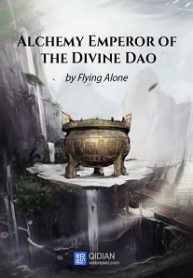The Rise Of Australasia - Chapter 375
- Home
- The Rise Of Australasia
- Chapter 375 - Chapter 375 Chapter 320 The Arrival of the Olympic Games
Chapter 375: Chapter 320: The Arrival of the Olympic Games
Please continue reading on ΒOXΝʘVEL.ϹΟM .
As time entered June in 1912, the popularity of the circumnavigation of Dawn Airship cooled down somewhat.
However, at the same time, the Sydney Olympics became one of the main topics of worldwide discussion, and attracted the attention of Europe and America.
Particularly under the constant conflicts among European nations, sports competitions at the national level also wielded significant influence.
Especially against arch-rival nations, no country wanted to lag behind, for it would otherwise face instigations from domestic and foreign media and inquiries from the public.
People are blind, and under the guidance of some domestic and foreign media, who knows if their anger will be directed towards the government?
With the development of previous Olympic Games, the Games have become a way for countries to compete for national dignity and honor peacefully.
If a country’s athletes perform well at the Olympics, it can bring good prestige to the government and the nation.
On the other hand, if a country’s sports performance is mediocre, especially when up against hostile nations, not only will the athletes be held to account by the public and the media, but the government may be implicated as well.
This was vividly demonstrated in later generations. Because of the development of the Internet in later generations, these situations were almost everywhere. To sum it up, it’s “winner takes all.”
Winning brings praise from the heavens, but losing, especially losing face in front of an enemy country, will make someone a villain in the eyes of the media and those with ulterior motives, even if they had previously made great contributions.
At present, numerous media from European and American countries have arrived in Australasia, with a conservative estimate of over a thousand journalists.
Before the Olympics, there should be at least a few hundred more journalists arriving.
After all, even newspapers and media have distinctions in scale. Larger newspapers and media outlets can afford the expense of airships, while smaller ones may not.
(vitag.Init = window.vitag.Init || []).push(function(){viAPItag.display(“vi_765923973”)})
Sydney Suburbs, Australasia National Stadium.
The construction of the stadium was completed over a month ago and has been open for all athletes to use recently.
Theoretically, the stadium and all associated training facilities are provided free of charge to all domestic and foreign athletes.
But this is only in theory. The most significant sports teams occupying the stadium and affiliated training facilities naturally come from the powerful European and American countries.
Australasia’s sports teams are not among them, but this is not because Australasia is not qualified to compete with these powerful countries. Even solely based on the relationship between Australasia, Britain, and Russia, there would be no way they would be prevented from using training facilities.
The main reason is that Arthur had already built separate training facilities for Australasia’s sports teams, with a complete range of diverse and well-equipped facilities, so they didn’t have to compete with other nations.
Unlike the Olympics of later generations, the participants with the most athletes in the present Games are still white people.
Most athletes from powerful nations are white, with only a few coming from Asian and South American countries that have yellow-skinned athletes.
As for black people, even though they have remarkable talents in sports, they would never be recognized by countries around the world, much less have the qualifications to participate in the Olympics.
It should be noted that racism is still very popular in Europe at present. The major powers of Europe do not appreciate each other’s ethnic groups, let alone those from the barbarian lands, right?
This can also be well-reflected in Australasia. If Arthur were simply pursuing a population, absorbing Asia’s vast population would easily push it past ten million.
But there is no need for that. Racism and discrimination in this era are not a joke. Colored people can never be recognized by white people.
A colored Australasia could never be recognized by Western countries and would never receive substantial assistance from Germany and Britain.
For example, to the British, the Island Nation is just a pawn used to counter Russia and the United States.
At a time when European powers are at their peak, countries like the Island Nation can never truly be allies to the European powers but can only serve as their pawns.
If the Island Nation truly became a top power in such an era, it would definitely be targeted by other powers.
It is worth mentioning that, like in history, this Olympic Games still faced many political disputes regarding nationality and national flags.
The most intense and famous dispute was the dispute between the Finnish and Bohemian teams.
Of course, the dispute was not between these two countries, but between Russia and the Austro-Hungarian Empire.
Both countries were generally weak and had already been occupied by Russia. Moreover, some regions of Bohemia were under the jurisdiction of the Austro-Hungarian Empire.
Before participating in the Olympic Games, Finland and Bohemia put forward a request to insist on independence and represent Finland and Bohemia separately in the competition.
This request was naturally rejected by Russia and the Austro-Hungarian Empire. After all, if they agreed to let these athletes participate in the games on behalf of Finland and Bohemia, wouldn’t it mean that they were acknowledging their status as invaders and indirectly giving the people in these two regions a reason to resist their rule?
Facing such a conflict, Arthur decided to adopt the Swedish method in history to resolve the conflict.
In history, Pierre de Coubertin proposed sports geography to resolve this diplomatic event, allowing the Stockholm Olympics in Sweden to proceed smoothly.
The so-called sports geography means that participating in the Olympic Games does not have to be an independent country. It can also be a region with an independent nation. The geography of sports can sometimes be different from political geography.
When Finland and Bohemia participate in the future Olympic Games, they will only raise the team nameplate during the opening ceremony, not the team flag. And when receiving awards, they will raise the national flag of the occupying country, followed by a small triangular local flag to show the difference between them and the athletes of the occupying country, thus solving the problem more satisfactorily.
Russia and the Austro-Hungarian Empire expressed understanding and recognition of this solution, while the athletes from Finland and Bohemia achieved their pursuits and naturally had no objections.
After perfectly resolving this national flag dispute, the Sydney Olympics began preparations.
According to the International Olympic Committee’s schedule and the situation in Australasia, the Sydney Olympics was expected to officially start in June, with the closing ceremony scheduled for around the end of July.
As time is close, the opening ceremony of the Olympic Games has begun rehearsals, and tickets for various events have started to go on pre-sale.
Australasia’s National Stadium is expected to accommodate more than 50,000 spectators, so ticket revenue will be significant.
Especially as the Olympic Games will last for nearly two months, dozens of events will be held during this time, with tickets sold for each event. The accumulated revenue will undoubtedly be substantial.
Before the ticket pre-sale began, ticket pricing became a headache for Australasia.
If the price is set too high, the Australasians may not be able to afford it. If their country’s Olympics do not have local spectators, it would be awkward.
But if the price is set too low, it could miss a great opportunity to make money.
After comprehensive consideration and combining the actual situation of previous Olympic Games and the economic situation of Australasia, the final ticket price for each event is expected to be around 2 to 3 Australian dollars.
Of course, the actual ticket price will vary. If you are an Australasian citizen, you can enjoy a 40% discount when purchasing tickets.
As for tourists from other countries, they can only buy tickets at the original price.
However, a ticket price of 2 to 3 Australian dollars is not too expensive, at least for those wealthy Europeans and Americans who can afford to travel abroad, this price is quite cheap.
According to the events of the Olympic Games, even if only 20,000 tickets are sold for each event, they can still make a profit of around 40,000 Australian dollars.
All events combined can easily bring in a profit of over two million Australian dollars, which is also a way to recover some costs.
However, Arthur’s purpose for hosting the Olympic Games was not to make money, but to use the Olympics to increase Australasia’s international reputation and status.
According to the current situation, this Olympic Games and the previous Global Sailing Plan have brought tens of thousands of foreign tourists to Australasia in recent months.
These tourists have made significant contributions to the economy of Sydney and nearby cities, and the financial income this year is expected to increase a lot.














